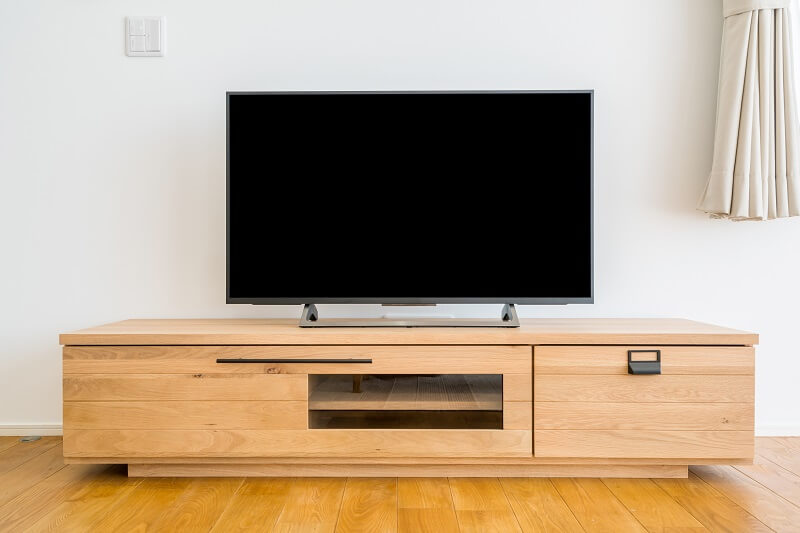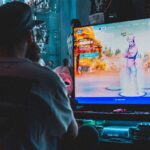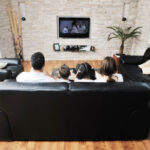Why TV Has Sound But No Picture
Introduction
Your TV has become a sound system instead of a TV. It has lost the vision part of television. You can hear sound just fine, but no picture. It is black. Listening isn’t what your TV is for! Don’t fear, and follow the fixes below.
Causes
Your TV has a myriad of settings that you can configure. Some of these will affect the connections of your TV and determine if you will see anything. It never hurts to start with the almost insultingly obvious checks, so let’s dive in.
Note: It’s a good sign if your TV displays menus or settings when you call them up. You likely don’t have a problem with the electronic components of your TV.
Soft Reset
The easiest place to start.
- Unplug your TV for 60 seconds. Don’t just turn it off.
- Hold the power button down for 30 seconds after it’s unplugged.
- Count slow on those 60 seconds or use a watch.
- Plug your TV back in and check for a picture. If it’s working, you are done.
- If not, go to the next step.
Brightness
Check the brightness setting on your device. Sometimes a setting can get glitched.
- Any picture now? If so, you’re done. If not, go to the next step.
Bad Connections
Reset Devices
It is helpful to reset all the connected source devices like Cable Boxes, Fire Sticks, etc. This might cure the no-picture problem, and it is pretty simple to do.
Check HDMI (Cables and Inputs)
The HDMI Inputs can have problems that will interrupt the video signal, while still allowing audio to function. There are two main points of failure, the input sockets, and the cables.
- First, unplug and reconnect each HDMI cable at both ends, the TV end, and the other connected device. Do this for every device that is connected to your TV.
- Use a known good cable and swap it with the cable from a particular source. See if that helps. Do this in turn for each source that you have. If this swap fixes a problem, then get a replacement cable and install it.
- Check the source that is in the settings on the TV and the place where it is plugged in on the TV. Since you are already getting sound, it is highly unlikely that there is a mismatch between input and setting, If no issue go to the next item.
- Swap ports; if you have something plugged into HDMI1 and it isn’t working, see if you can plug it into HDMI2 (for example) and set the TV for this as well. Some TVs will look automatically for the active source.
- If that works see if another device will work in HDMI1. If it doesn’t, it could mean your HDMI port is bad or there is a major software glitch and a Factory Reset might be necessary. It might also indicate a problem with a particular connected device if ”that device” doesn’t work in any port.
- Occasionally non-certified HDMI cables will cause problems in this way, it is best to use certified cables.
- Some newer models will have an HDMI test mode. you can check the cables for faults using this setting.
3
Software Issues
If your TV is not set to automatically update its software, it may cause erratic operation. Performing a manual update is another step you can take to eliminate a possible cause.
- Given the occasional instability of WiFi-based updates, use a hard-wired source or a flash drive in a USB port on the TV.
Factory Reset
If the update had no effect, or wouldn’t work, the last step is a factory reset. Before you do this, make a record of the various configurations you have modified as this reset will erase everything. Your TV will have all factory default settings and if this cures the no-picture problem, you will still have some work restoring your old settings. Perform the reset according to the instructions that came with your TV.
Hardware Issues
You have checked the settings software, connections, and connected devices; now let’s check the function of the TV itself. If you haven’t seen the How to Use a Multimeter guide yet or if you need a multimeter, now’s a good time to check those out.
Bad Backlights
This quick test will help you determine if the backlights on your TV have failed.
- Turn on the TV.
- Make sure you are connected to a source that will give you a signal with sound and picture (if your TV was working properly you would have a picture, that is)
- Shine a bright flashlight on the screen.
- In the area lit by the flashlight, see if you can see an image.
- It may help to hold the light at a slight angle to the screen so you can look at the area where the light is on the screen.
- Check several areas on the screen, you may find that you have an image in one area and not in another
- If you do see an image this is a sign that the backlights have failed. The generation of the image means everything else is working properly. The TV will likely not give blink codes or any other trouble signs. You can replace backlights with available aftermarket parts. Read the paragraphs below and determine if you want to try the fix.
- If you don’t see an image, you need to determine if your power supply is bad. Read the information below first.
Now we move into the area where the back comes off, so to speak. It isn’t as complicated as it sounds. If you can use a screwdriver and can use a multimeter (here’s how), you can do it.
You can still use your eyes even if you can’t or don’t want to use a multimeter. Burned, overheated, or failed components can show up even more to the eye than the meter.
- You are mainly looking for signs of failure on the boards and you will replace the board as a unit.
- Remember that there are somewhat exposed high-voltage areas on the power supply board. Consider the following when taking voltage measurements:
- Use common sense and where possible use one hand at a time for measurements.
- Connect to the ground first, then with one hand check the high voltage connection or measurement point.
- Test leads with insulated clips on your multimeter will help greatly with this.
If you aren’t comfortable doing internal checks, you can have a technician check it out. Attempting repair instead of just throwing it out is a great way to go.
Cable Checks
Even before you test the various boards, just disconnecting each cable and reconnecting it can sometimes fix the problem. Especially important in this step are the ribbon cables that run between a small board called the T-Con board and the Main Board.
- First, make sure the TV is unplugged.
- Disconnect and reconnect each cable one at a time.
- You might even want to clean the contacts on the ribbon cables with a pencil eraser before reinserting them.
- Take your time and be gentle. Most cables will go in only one place comfortably, but it doesn’t hurt to make a small mark near each one as you complete the disconnect-reconnect step.
- After you do this, plug the TV in and see if you now have an image. If so, you’re done; if not, go to the next step.










